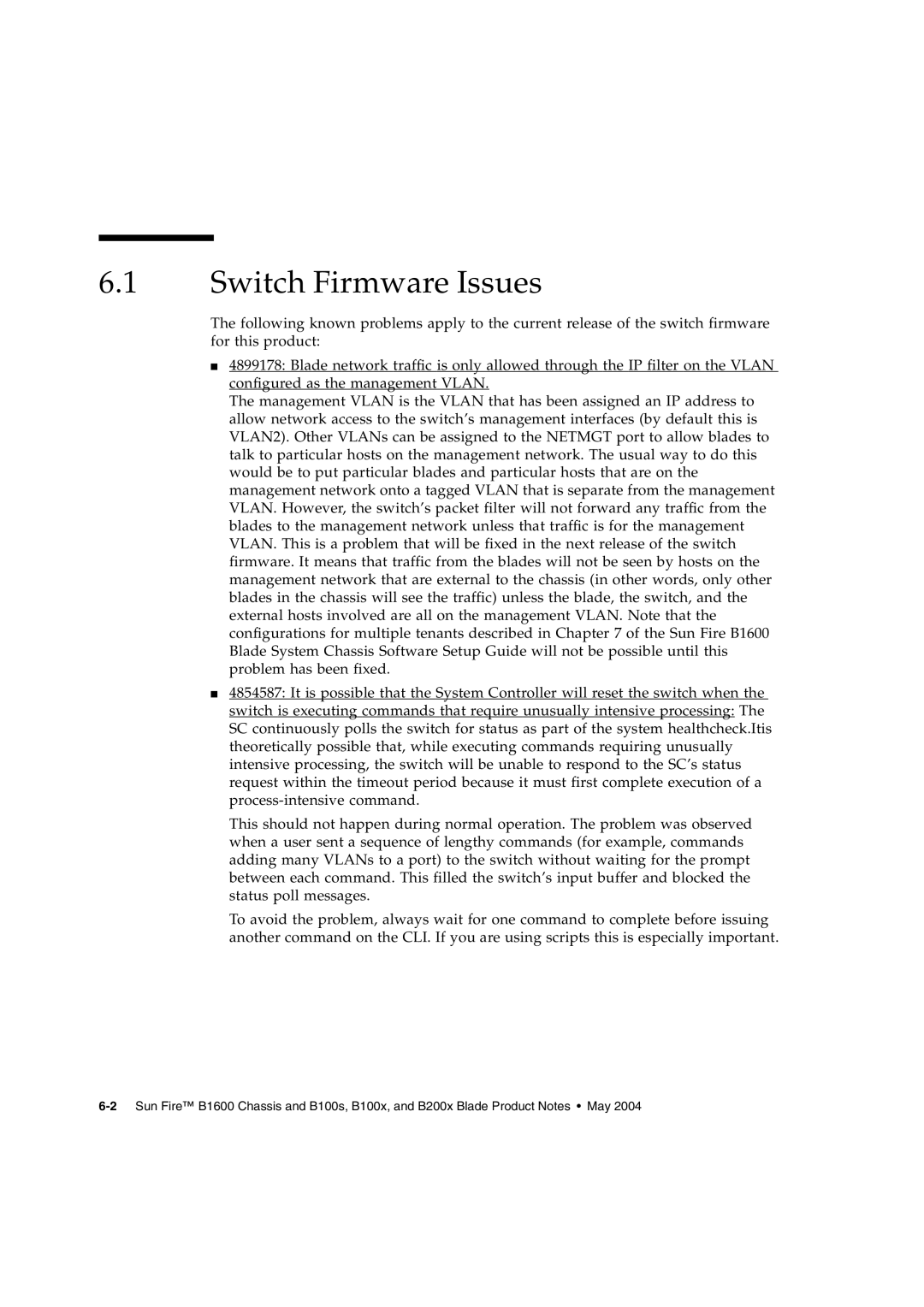6.1Switch Firmware Issues
The following known problems apply to the current release of the switch firmware for this product:
■4899178: Blade network traffic is only allowed through the IP filter on the VLAN configured as the management VLAN.
The management VLAN is the VLAN that has been assigned an IP address to allow network access to the switch’s management interfaces (by default this is VLAN2). Other VLANs can be assigned to the NETMGT port to allow blades to talk to particular hosts on the management network. The usual way to do this would be to put particular blades and particular hosts that are on the management network onto a tagged VLAN that is separate from the management VLAN. However, the switch’s packet filter will not forward any traffic from the blades to the management network unless that traffic is for the management VLAN. This is a problem that will be fixed in the next release of the switch firmware. It means that traffic from the blades will not be seen by hosts on the management network that are external to the chassis (in other words, only other blades in the chassis will see the traffic) unless the blade, the switch, and the external hosts involved are all on the management VLAN. Note that the configurations for multiple tenants described in Chapter 7 of the Sun Fire B1600 Blade System Chassis Software Setup Guide will not be possible until this problem has been fixed.
■4854587: It is possible that the System Controller will reset the switch when the
switch is executing commands that require unusually intensive processing: The SC continuously polls the switch for status as part of the system healthcheck.Itis theoretically possible that, while executing commands requiring unusually intensive processing, the switch will be unable to respond to the SC’s status request within the timeout period because it must first complete execution of a
This should not happen during normal operation. The problem was observed when a user sent a sequence of lengthy commands (for example, commands adding many VLANs to a port) to the switch without waiting for the prompt between each command. This filled the switch’s input buffer and blocked the status poll messages.
To avoid the problem, always wait for one command to complete before issuing another command on the CLI. If you are using scripts this is especially important.
